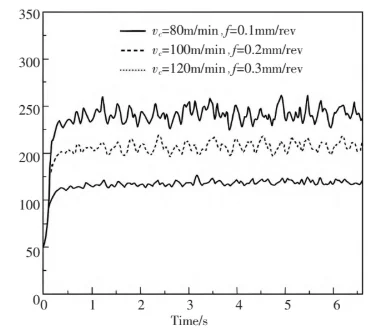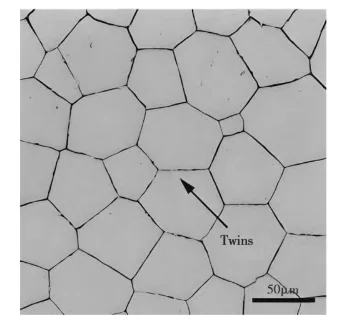Intelligent CNC Systems and High-Hardness Alloy Processing
The increasing complexity of thermal-mechanical responses in the processing of high-hardness special alloy molds drives the development of intelligent CNC systems. These systems build a multi-dimensional quality control structure. This structure integrates path control, characterization analysis, and intelligent prediction. The system effectively solves traditional control problems and significantly improves mold surface quality.
1. Material Microstructure and Surface Properties
1.1 Alloy Metallographic Characteristics and Surface Forming Mechanism
Metallographic and electron microscopic observations revealed key relationships. The size and distribution uniformity of carbides in the material structure closely relate to the matrix phase structure’s hardness and plasticity. Carbides decisively influence cutting force, processing stability, and final surface quality.
Coarse carbides easily cause stress concentration and microcracks. Therefore, refining the initial structure and controlling the carbides are the basis for improving surface quality and fatigue resistance after CNC machining. These controls also provide a foundation for process optimization.
1.2 Influence of Microhardness and Residual Stress Distribution
Mold materials experience high-frequency thermal-mechanical loads during CNC machining. These loads induce surface microstructural reconstruction, such as grain refinement and white layer formation. This reconstruction leads to significant changes in microhardness and residual stresses. These changes, in turn, affect the mold’s wear resistance, fatigue resistance, and dimensional stability. Metallography and electron microscopy can systematically characterize machined sections. They clearly identify these microstructural evolution phenomena and determine the state of the work-hardened layer and heat-affected layer.
Vickers microhardness testing produces a hardness gradient curve. This curve reflects the depth of plastic deformation. X-ray or residual stress analyzers show residual compressive stress bands on the surface. These bands generally improve fatigue life.
1.3 Research on Micro-Organizational Evolution Behavior
The combined effect of high-temperature heat flow and mechanical stress causes plastic deformation and dynamic recovery of the grains in the processed area. Metallographic and transmission electron microscopy reveal grain refinement and special structure formation in the shear band area. These structures reflect the organization’s dynamic response behavior.
In terms of mechanical properties, researchers can use micro-area hardness testing and electron backscatter diffraction technology (EBSD). They use these tools to quantify the processed surface’s hardening degree and orientation changes.
The coupling of the material’s initial structure, the temperature rise rate, and the strain rate affect the processing-induced recrystallization and phase transformation behavior. Especially in high-alloy steel, the dissolution-precipitation cycle of carbides will affect the strength-toughness matching and crack resistance of the surface layer.
2. CNC Machining Characteristics of Special Alloys
2.1 Analysis of Cutting Mechanical Behavior of High-Strength Alloy Materials
High-strength alloys (such as H13 and Cr12MoV) have high hardness, high thermal strength, and complex carbide strengthening phases. These phases do not match the matrix mechanics. This results in high deformation resistance, difficult chip formation, and severe tool wear during CNC machining.


2.2 Cutting Heat Accumulation and Material Thermal Softening Response Mechanism
High temperature accelerates the evolution of the matrix substructure, including dynamic recovery and recrystallization. It also accelerates the melting or coarsening of carbides. This results in a weakening of the material’s yield strength and hardness. Metallography and transmission electron microscopy can identify thermal softening characteristics, such as reduced grain size and lower dislocation density in the heat-affected zone.
3. Synergistic Application of Surface Modification Technologies
3.1 Regulatory Role of Laser Surface Treatment Technology
Metallographic and electron microscopic analysis show that fine lamellar martensite or subgrain structure and dispersed carbides form in the treated area. Simultaneously, grains in the heat-affected zone refine significantly. This process effectively improves the hardened layer’s strength and wear resistance. It also helps to prevent crack propagation and fatigue crack initiation.
3.2 Influence Mechanism of Ultrasonic Vibration-Assisted Machining
Ultrasonic vibration-assisted machining superimposes ultrasonic micro-vibrations ($20-40$ kHz). This effectively addresses the surface quality degradation problem of high-strength die steel during traditional CNC machining. The main mechanism is that periodic intermittent cutting significantly reduces average cutting forces and frictional heat. This inhibits heat accumulation and plastic collapse of the material, thereby reducing the formation of surface microcracks and scratches.
4. Experimental Analysis
4.1 Comparison of Surface Roughness under Different CNC Strategies
To evaluate CNC technology’s influence on mold surface quality, this paper designed the same mold sample. Researchers then conducted a comparative processing experiment using three typical CNC strategies under the same cutting parameters.
4.2 Analysis of Surface Defect Rate and Number of Repeated Processing
To further quantify the impact of different CNC strategies on surface quality stability, this article used the same experimental platform. Researchers calculated the surface defect rate and the number of samples that needed reprocessing in batch processing of 20 pieces for each strategy. They used the Ra value exceeding the standard or surface abnormality as the judgment standard. This process constructed comparative data, as shown in Table 2.
5. Conclusion
Research clearly showed that metallographic analysis, microhardness, and residual stress measurement can reveal the structural evolution behavior of materials under thermal-mechanical loads. Furthermore, the intelligent CNC system achieves surface hardness gradient control and stress distribution optimization through dynamic compensation and neural network prediction.
